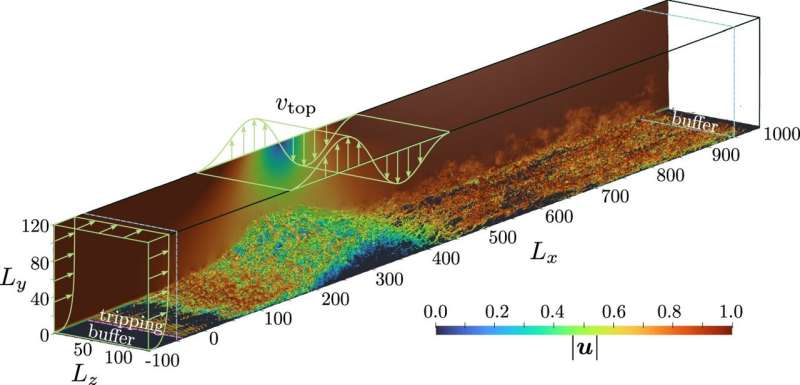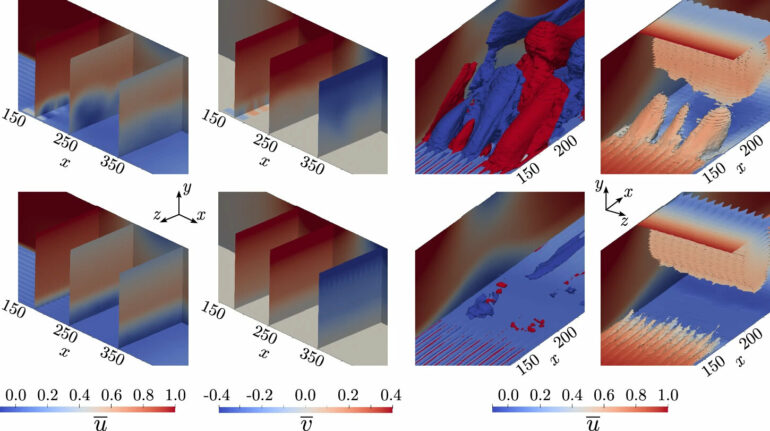Artificial intelligence aboard aircraft could help prevent terrifying drops in altitude. In a new study, an international research team successfully tested a machine learning system for preventing trouble with turbulence. The findings are published in the journal Nature Communications.
Researchers from KTH Royal Institute of Technology and the Barcelona Supercomputing Center conducted tests on an AI system designed to enhance the effectiveness of experimental technologies for manipulating airflow on wing surfaces. The results indicate that these innovations work better when paired with deep reinforcement learning (DLR), in which the program adapts to airflow dynamics based on previously learned experiences.
The AI control system zeroes in on one particularly dangerous aerodynamic phenomenon known as flow detachment, or turbulent separation bubbles, says Ricardo Vinuesa, a fluid dynamics and machine learning researcher at KTH Royal Institute of Technology in Stockholm.
Flow detachment is as serious as it sounds. To stay aloft, airplanes need slow moving air underneath the wing, and fast moving air above it. The air moving over the wing surface needs to follow the wing shape, or “attach,” to the surface. Vinuesa says that when the air moving over the wing’s surface no longer follows the wing shape and instead breaks away, it creates a dangerous swirling or stalled airflow.

Simulation setup. Top: schematic representation of the computational domain together with an instantaneous snapshot of vortical structures captured by the Q criterion and colored by velocity magnitude. © Nature Communications (2025). DOI: 10.1038/s41467-025-56408-6
“This usually occurs when the wing is at a high angle of attack, or when the air slows down due to increasing pressure,” he says. “When this happens, lift decreases, and drag increases, which can lead to a stall and make the aircraft harder to control.”
The researchers report that they can reduce these bubbles by 9%.
The team tested how effectively AI could control experimental devices that pulse air in and out of a small opening in the wing surface, known as synthetic jets. While such innovations are still in the experimental stage, aerospace engineers look at them to complement physical features such as vortex generators that planes rely on to maintain the right balance of airflow above and below the wings.
Up to this point, the prevailing wisdom has been that these bursts should occur at regular periodic intervals. However, the study shows that periodic activation only reduces turbulence separation bubbles by 6.8%.
“This study highlights how important AI is for scientific innovation,” Vinuesa says. “It offers exciting implications for aerodynamics, energy efficiency and next-generation computational fluid dynamics.”
More information:
Bernat Font et al, Deep reinforcement learning for active flow control in a turbulent separation bubble, Nature Communications (2025). DOI: 10.1038/s41467-025-56408-6
Provided by
KTH Royal Institute of Technology
Citation:
AI on aircraft can reduce risk of mid-air stalls and sudden drops, study shows (2025, February 17)



